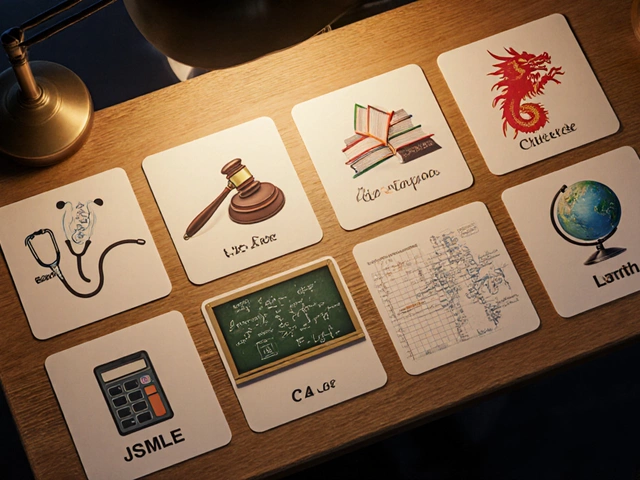
Picture this: It’s late at night. Your kid’s room glows with the blue light of practice mock tests, half-open NTA books, and the nervous hum of what ifs. They’re prepping for the Joint Entrance Examination, the gatekeeper to India’s elite IITs. And the gut-punch question hits—does two years really cut it? Or is this timeline just enough rope to trip over? If you’re a parent like me, you’ve probably wrestled with the weight of that question (and, yes, fielded it a thousand times from anxious dads at the chai stall). The whole system says two years is the golden window, but is it all hype?
What Does It Take to Crack JEE in Two Years?
Let’s cut through the noise. The Joint Entrance Exam—JEE Main and Advanced—is a marathon, not a sprint, but most students start lining up at the gate in Class 11. That’s a solid two-year stretch. The logic: You sync your board exams’ content with JEE’s dizzying syllabus and (in theory) come out battle-ready. But here’s where it gets real—unlike any regular school exam where reading the textbook could sneak you by, JEE demands deep understanding, relentless practice, and serious time management. Almost 10 lakh students registered for JEE Main 2025, but only about 2-3% actually got a top-tier IIT seat. That means your prep needs to be laser-focused and strategic from Day 1.
Just how much ground are you covering? For JEE Main, the syllabus includes 96 topics across Physics, Chemistry, and Math—much of it stretching, re-compressing, and sometimes warping your standard board syllabus. Let’s be real: nobody can (or should) master every subtopic, but the catch is—JEE goes deep. Take Physics. It’s not enough to know Newton’s laws; you need to solve problems that cross over five chapters, twist them around a curveball, and then ask ‘why did the apple fall, but at THAT angle?’ In Chemistry, the rote stuff ends fast. Organic asks you to ‘think like a molecule.’ Math? Well, if you’re not comfortable with integration by substitution by month six, the mock papers start to feel like riddles written by evil geniuses. Yet, the two-year timeline is set up to teach you not just what to study, but more importantly—how not to waste time.
Big coaching centers have hard data. In their internal trackers, students structured in a proper 2-year course score, on average, 15-25% higher than those in rush programs. This isn’t magic—it’s method. With two years, you can ‘layer’ your knowledge: the first few months look like slow progress, but then things click. That’s exactly how it worked for my cousin Ravi—he started slow, built up his problem-solving stamina, and was able to revisit difficult chapters long before crunch time. So, is two years the perfect number? Only if every month counts and the plan stays elastic enough to tweak when you hit a wall.
Building the Right Study Game Plan
Having a two-year window is like getting an early bird ticket to a rock concert. You get to choose your seat—front row (deep dives and clarity) or balcony (skimming and guessing). The best JEE toppers aren’t always the ones who log the most hours—they know how to flip smart planning into sharp results. Here’s the recipe that works for most hard-hitters:
- Break down those two years: The first year hits the basics. Think fundamentals, not flashcards. You lay out your groundwork with NCERT texts—unsexy but essential. The second year swerves into advanced material, pyrotechnic-level mock tests, and serious error analysis.
- Consistency trumps intensity: Burning out by week 16? Not worth it. Data from Allen Career Institute in Kota showed students who managed four to five hours daily, but kept it going months on end, outperformed those who pulled heroic but short-lived 12-hour shifts. My daughter Mira, for example, found a rhythm with her group, swapping notes and pushing each other through slumps, instead of drowning in all-nighters.
- Smart revision cycles: Once a topic feels ‘done,’ set reminders to hit it again after a month, then two. The Ebbinghaus Forgetting Curve says we forget 70% of new info within a week if we don’t review. So the best use of two years is not learning more, but remembering more of what you already did.
- Early mock tests: Most kids wait until the last six months to get cracking with papers—but those who start by the end of first-year have way less anxiety and a much sharper exam temperament.
- No silo learning: JEE throws integrated questions (think: the math of a chemical reaction). So your prep should blur subject boundaries early—for example, working out practice problems that cross-link Physics and Math.
There’s no one-size-fits-all. Kids from urban mega-schools often have access to ‘finishing school’ coaching, while rural students might devour YouTube’s free lessons out of necessity. But across the board, the winners combine a tight schedule, aggressive self-testing, and a slightly stubborn streak. They build mental stamina, not just rote speed. One trick I’ve seen that works for even distracted teenagers: Write out your mistakes in a ‘black book.’ Watching that list shrink is oddly satisfying, and it’s a real confidence booster by month 20.

The Myths—and Traps—of the Two-Year Prep Model
The two-year timeline has become an almost sacred rite of passage. Everyone jumps in because ‘that’s how it’s done.’ But here’s what the coaching brochures rarely admit: the real trap is believing time alone matters more than planning, mindset, and course correction.
First, the myth that every hour should be study time. It’s not the grind; it’s the clarity you extract. Recent research by the Indian Statistical Institute showed that students who took regular ‘active breaks’ and did spaced revision actually scored 17% better on pattern-recognition questions. So cramming non-stop for 730 days straight isn’t just exhausting, it’s counterproductive.
Another myth: You can ‘catch up’ lost months in the second year. Fact is, most students who fall seriously behind after year one rarely make it to the top percentile, not because of lack of intelligence, but because the topics start stacking up (think: snowball effect). And the biggest emotional landmine? Comparing your progress to coaching-center ‘toppers’—that’s the shortest road to burnout. Everyone has a different learning curve; some get stuck in circles by the mechanics of organic chemistry, others may breeze through it and stumble on math. Being realistic about your strengths and timing your sprints is what gets you to the finish line.
Parents, too, fall for the two-year safety-myth. I’ve watched more than one neighbor panic and switch their kids to pricier programs at the first sign of trouble, believing extra class hours will magically fix the leaks. It rarely works. The best students (and their families) treat the two-year prep as a journey that needs regular pit-stops for self-assessment, feedback, and sometimes – a quick gear change. Maybe your child needs an extra crash course in waves, or a deeper dive on calculus. It’s about agility, not just time served.
Pressure is a silent thief in this timeline. It chips away at confidence, especially when mock test scores stall or dip. That’s where family support and a non-judgmental home environment make all the difference. As Dr. Anurag Mehta from IIT Delhi puts it:
“The biggest error is assuming more hours mean more learning. Breaks and honest self-check-ins often matter more than another round of practice problems.”It takes guts to ask ‘why isn’t this working?’ and change course early, instead of doubling down on anxiety. That’s the real art of using two years well.
Data, Success Rates, and Real Stories—What Actually Works
So, does the traditional two-year timeline actually map to real-world results? Let’s get specific. A recent analysis by Resonance, a top coaching institute, showed about 55% of their IIT-JEE successful candidates took the full two-year course, while roughly 25% came from one-year ‘crash batch’ programs, and the rest were repeaters. The common thread among the top performers? Not just calendar time, but structured strategy and flexibility to adapt.
| Year of Study | Selection Rate (%) |
|---|---|
| 2-Year Program | 18 |
| 1-Year Program | 7.5 |
| Repeater Batch | 10 |
The difference isn’t always just in textbooks or coaching material—it’s how those resources are used. The students who nail it make notes in their own words, brainstorm with study groups, and religiously solve previous years’ papers (since patterns do repeat—sometimes with a twist). My friend’s daughter, Rhea, spent two years on a rural scholarship, cycling 14 km each way; she treated each day as a mission, with weekly goals rather than daily stress, and she cracked a top 5000 rank. Not everyone needs the ‘perfect’ starter kit—but everyone who makes it builds a rhythm. They aren’t immune to slumps, but they bounce back from them faster.
Another slice of data: Of those who scored in the top 1000 AIR in 2024, almost 70% reported studying at least 5 hours on weekdays and 7-9 hours on weekends, but almost all took routine breaks and spent at least two hours each week on sports, art, or music—as a sanity anchor. This balance, often dismissed by anxious families, gives breathing room and resilience.
So, when people ask, “Is two years enough for JEE?” the honest answer is: It’s enough for most kids if the timeline is used with intention, flexibility, and sharp self-checks. The trick isn’t the number of months, it’s how you structure them. JEE preparation is less about ‘clocking time’ and more about relentless improvement, self-honesty, and keeping it real. If you’re starting the two-year journey, be kind to yourself (or your kid), work the plan, and leave space for course-corrections. Because at the end of it, that’s what separates the IITians from the also-rans—how they used their two years, not just that they had them.





